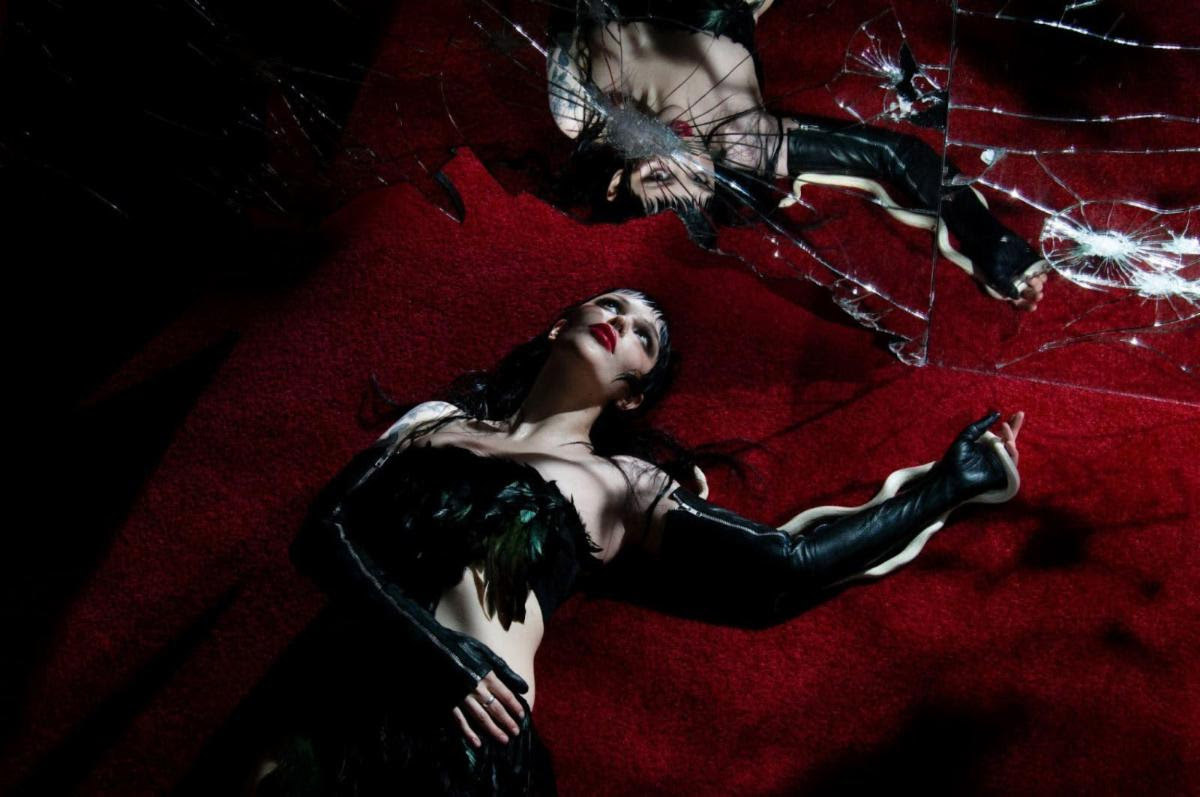Coulda Woulda Shoulda
 |
There’s only so many hours in a day, and there’s so many bands out there. No way you can check them all out in one lifetime. Many are bound to pass under your radar or slip through the cracks. But what about the ones you’re aware of but don’t bother to check out? What if one becomes a favorite and you kick yourself for not discovering it sooner? Which bands did you take forever to check out, and why?
– – –
 |
by Anthony Abboreno |
The one band that I intentionally ignored for years for entirely stupid reasons was Minor Threat. They were first introduced to me in college — which is early ’00s for me — during a phase when I listened primarily to ’80s hardcore. My friend raved about them, telling me that they were awesome and amazingly fast, and threw them on in the car. He also made the mistake of telling me that they had indirectly inspired the straight edge movement, but that calling them straight edge wasn’t a fair characterization of their ideals.
Okay, look: in high school, I had been an even bigger dork than I am now. I liked metal and punk, but I didn’t know much about either genre, and I dressed like Weird Al Yankovic in steel toe boots. My first encounter with the idea of straight edgers was through an anti-drug PSA I watched in driver’s ed. The teacher was a former prison guard who picked on stoner kids and told stories about torturing inmates with a car alternator, and I don’t think he cared much about the video at all. He probably just pulled it out of a stack of tapes he had lying around. So in college when my friend said “straight edge,” I immediately associated the music with institutional creepiness and tuned it out. Not fair, but that’s how it happened.
On top of that, I just wasn’t interested in music with a positive social message. “I’ve got a six pack and I don’t need you” hit the spot for me a lot better than “At least I’m fucking trying, what the fuck have you done.” I was an angry jerk. I’d avoid stuff that I thought was too “humanist.” Later on, I got annoyed by Ian McKaye’s objection to Slayer’s cover of “Guilty of Being White” even though McKaye was totally justified in being angry, and Undisputed Attitude sucks, to boot.
It wasn’t until last year that I finally went out and bought Minor Threat’s discography CD, just because I thought it was about time that I knew what people were talking about. And, you know, it is great. I’ve finally hit a point in my life where I can’t use apathy like an accoutrement anymore (even though I still try, sometimes) and Minor Threat remind me that I have options. Of course, this isn’t news to anybody, but what the fuck: it’s what I’ve got.
– – –
 |
by Casey Boland |
As noted in my 2009 retrospective, Napalm Death‘s Time Waits For No Slave ranked high on my list of listening priorities last year. I wrote an exhaustive and rambling review of said album elsewhere. I might have insinuated in the review that I’ve been a Napalm Death fan for a long time. As music journalists, we’re supposed to possess extensive knowledge of every band we cover, especially the big names. But I shamefully admit: it wasn’t until age 30 that I fully embraced Napalm Death.
The Code Is Red?Long Live The Code hooked me. Someone played it repeatedly at an old job. I had no idea who it was and my coworkers rightfully pilloried me for my ignorance. I did not admit to never having owned a Napalm Death album. But I made it a mission to catch up. It pained me to ponder the lost years of neglecting this most important of bands. While cranking From Enslavement to Obliteration, I discovered that the hardcore groups I filled my ears with during my formative association with youth subcultures were not responsible for the hallowed blastbeat. Napalm Death made all of those bands look fey and puny in comparison. No, The Locust and Charles Bronson were not as fast as it got.
My long devotion to DIY hardcore led to many critical omissions and misguided life choices. Perhaps my neglect of Napalm Death looms largest. I spent more time and money on 7″s by long-forgotten bands of intensely dubious quality in an effort to support the scene. Napalm Death was not playing the basement down the street that weekend with my friends’ bands. But you’re never too old to rediscover and appreciate the greats — or to sell those old hardcore 7″s.
– – –
 |
by Chris Rowella |
I’m a man of simple tastes. If it’s scary or takes place in a desert, I’ll watch it. If it’s full of garlic and/or cheese, I’ll eat it. When it comes to music, write some awesome bluesy sludge riffs and you’ve got me hooked. With that in mind, I still can’t understand why it took so long for me to check out Church of Misery. They’ve been around about as long as I’ve been listening to heavy music, and are really everything I want to hear: creepy samples, songs about serial killers, and downtuned “fuck you” riffs in the key of Sabbath.
Shotgun Boogie (James Oliver Huberty)
I had heard their name kicked around for a while, but had no idea what their sound was. Since that was the case with countless other bands, I didn’t bother seeking out any tunes. It wasn’t until this past June, when I received a link to check out a track off last year’s gargantuan release Houses of the Unholy (reviewed here), that I realized I had been missing out on something incredible. I immediately sought out their discography and discovered splits with like-minded sludge fiends Iron Monkey, Deer Creek, and Acrimony. It seems like the only thing missing is a collaboration with that other institution of Japanese doom, Corrupted.
Not only were Church Of Misery an enjoyable find and new favorite, they are the kind of band I recommend to anyone who listens to metal. Not a single person has come back to me and said, “Yeah, this band sucks.” Referencing everything from Sir Lord Baltimore to Grief, these guys continue to satisfy my need for smiley-face hate.
– – –
 |
b y Cosmo Lee |
I actually liked depressive black metal at one point. The idea seemed cool: some dude — I have yet to see a one-woman black metal project — channeling his introspection into something mysterious and limited. If it had a two-toned MySpace and fewer than 200 friends, I was into it. I really got into small distros. It all felt DIY and punk.
At some point, I saw through the emperor’s new clothes. The stuff made me feel like crap. It was made by people who feel like crap, for people who like to feel like crap. I don’t like to feel like crap. I like the sun. I like liking people. I like metal that makes me feel strong. Give me Manowar over a Burzum clone any day.
So I ignored Sweden’s Shining for years. Connoisseurs liked them. Fans liked them. But as far as I knew, Shining were just another depressive band. It didn’t help that frontman Kvarforth is a nutjob who cuts himself onstage and says ridiculous things in the press.
Then I reviewed Norway’s Shining for a website recently. I did some research, stumbled across the Swedish Shining, and found that the two are very different. Norway’s Shining — not their current incarnation, anyway — are not my thing. But Sweden’s is so up my alley. It’s not happy, but it’s not sad-sack music, either. Kvarforth’s suicidal shtick must be an affectation on some level, because this music feels full of life. It’s searching, lyrical, even strong at times — particularly the later, more exploratory stuff. I picture confident pros, not basement-dwelling photophobes. Since then, I’ve been furiously catching up and kicking myself for missing out.
– – –
 |
by Francesco Ferorelli |
Memphis, TN’s His Hero is Gone were active from 1995 until 1999. I was in high school then, regrettably farting around with underground hip-hop and second-generation New York hardcore. On the insistence of a knowledgeable friend, I heard HHIG in the early ’00s. Their second full-length Monuments to Thieves is now one of my all-time top 10 favorite records.
HHIG get labeled all sorts of things by all sorts of people: crust, sludge metal, hardcore, thrash, grindcore. Their scathing political conscience, DIY ethos, and negative outlook are all punk hallmarks, but their superior chops, guitar leads, and general delivery are entirely metal. Unusual song structures and a vocalist any death metal band would envy further muddy the waters of easy classification. HHIG’s blend of metal and punk was less Corrosion of Conformity and more Nausea. CoC played metal with a very punk attack, whereas Nausea’s punk had a distinctly metal attack.
Over the course of three full-lengths and several EP’s, HHIG delivered total armageddon with technical rigor and easily overlooked finesse. Musicianship aside, however, what endure about their recordings are atmosphere and confident songcraft. Monuments to Thieves is 25 minutes long without an ounce of fat. It boasts stunning climaxes and varied tones of desperation. Todd Burdette’s crushing scream both terrifies and imparts the emotional gravity of his subject matter, a trick precious few screamers manage. Listen to “Chain of Command,” a particularly kill-your-boss kind of track on a particularly kill-your-boss kind of album. Mid-track he asks, “How long? How long will we swallow? How long will they feed? How long will we follow? How long will they lead? How long?”
How long indeed?
– – –
 |
by Jess Blumensheid |
I once disliked doom. I found it required too much attention, replaced substance with slowness, and sounded like a mess. A slew of bands helped me overcome that hunch with time. But Eyehategod weren’t among these eye-openers. It took me almost a year to finally reconsider their worth.
I usually remember the first-time aversions to everything. I cringed from my first taste of Eyehategod’s Dopesick. How filthy. How ugly. How slimy. And what is up with all that feedback? My nerves preferred the smooth fizz of Saint Vitus and the like, which later proved to settle my stomach upon processing Eyehategod.
But like the worst car crash I had ever seen, Eyehategod were too hard to ignore. On Dopesick, they honked horns with piercing feedback, burned rubber with low-end riffs, and shredded glass with chaotic cymbal crashes. Then came Mike Williams’ scream, which was so intense that no amount of Grade-A smack could quiet its shiver. This wreckage was the most distressed metal I had ever heard.
My initial heartburn eventually subsided, and I was hooked. By the time I accepted Eyehategod and all their filth, they were way past their heyday. They had already become legends by the turn of the century. I was just that young kid who didn’t know any better.
– – –











